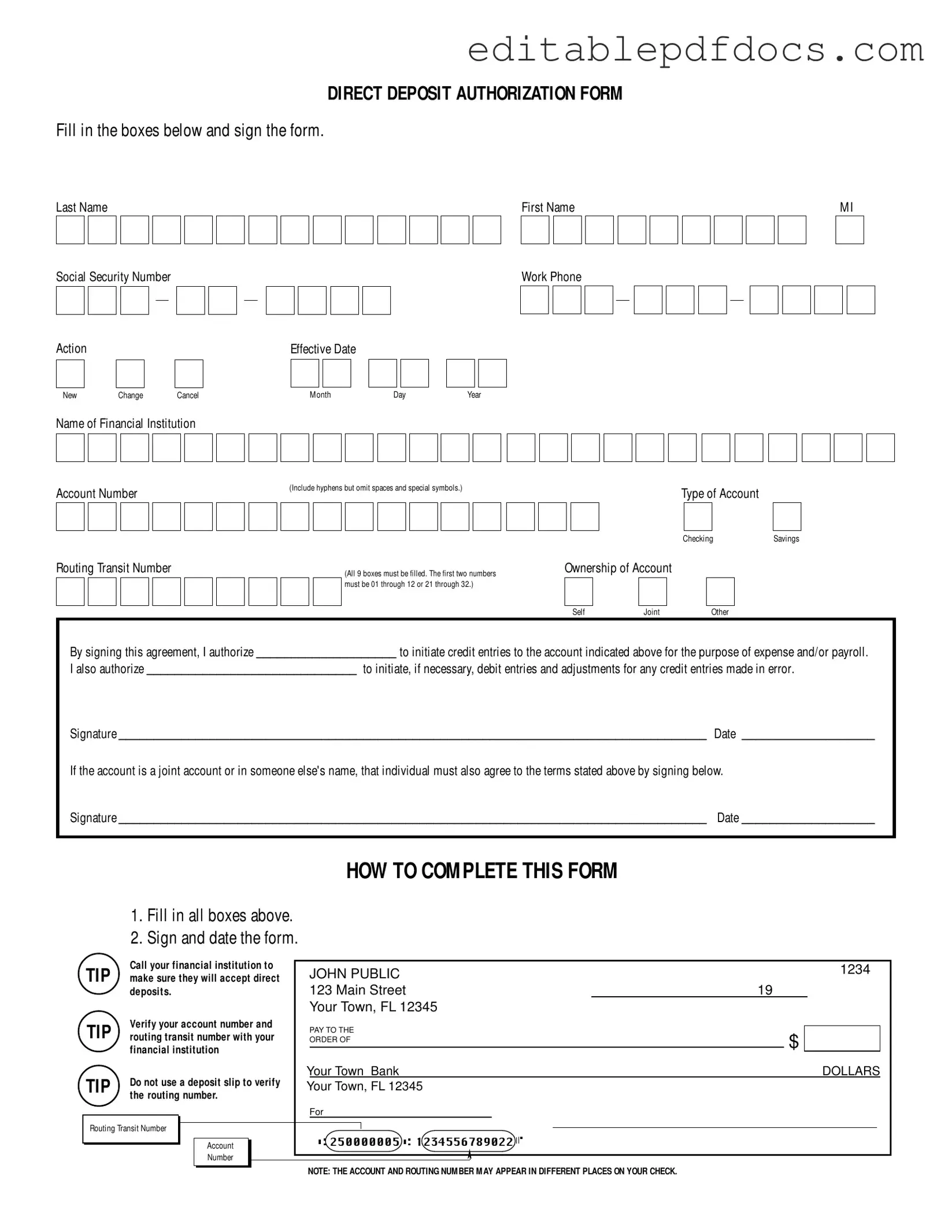Filling out a Generic Direct Deposit form may seem straightforward, but there are several common mistakes that individuals often make. Awareness of these errors can help ensure a smooth process when setting up direct deposit for payroll or expenses.
One frequent mistake is failing to fill in all the required boxes. Each section of the form must be completed, including names, Social Security numbers, and account details. Omitting any information can lead to delays or even rejection of the application.
Another common error involves the routing transit number. This number is critical for directing funds to the correct bank account. People sometimes misread this number or fail to verify it with their financial institution. It is important to ensure that all nine digits are entered correctly, as even one incorrect digit can cause funds to be misdirected.
Additionally, individuals may confuse the account number with the routing number. Each serves a different purpose and must be entered in the correct field. Double-checking both numbers with the bank can prevent this mix-up.
Some people also forget to indicate the type of account—whether it is a checking or savings account. This selection is essential, as it informs the financial institution where to deposit the funds. Leaving this blank can lead to confusion and potential errors in processing.
Another mistake occurs when individuals do not sign and date the form. A signature is a necessary part of the authorization process. Without it, the financial institution cannot process the direct deposit request. This step is often overlooked, especially if someone is in a hurry to submit the form.
In cases where the account is a joint account, both account holders must sign the form. Failing to obtain the necessary signature from the other party can result in the form being rejected. It is important to communicate with all account holders to ensure compliance with this requirement.
Some individuals rely on deposit slips to verify their account information. However, this is not advisable, as deposit slips can sometimes contain different routing numbers or account numbers. Instead, contacting the financial institution directly for verification is the best approach.
Lastly, people may neglect to check the effective date of the action they are requesting. Whether it is a new direct deposit setup, a change, or a cancellation, ensuring that the effective date is accurate is crucial. An incorrect date can lead to funds being deposited at the wrong time or not at all.
By being mindful of these common mistakes, individuals can help ensure that their Generic Direct Deposit forms are completed correctly, facilitating a smooth and efficient process for receiving funds.
